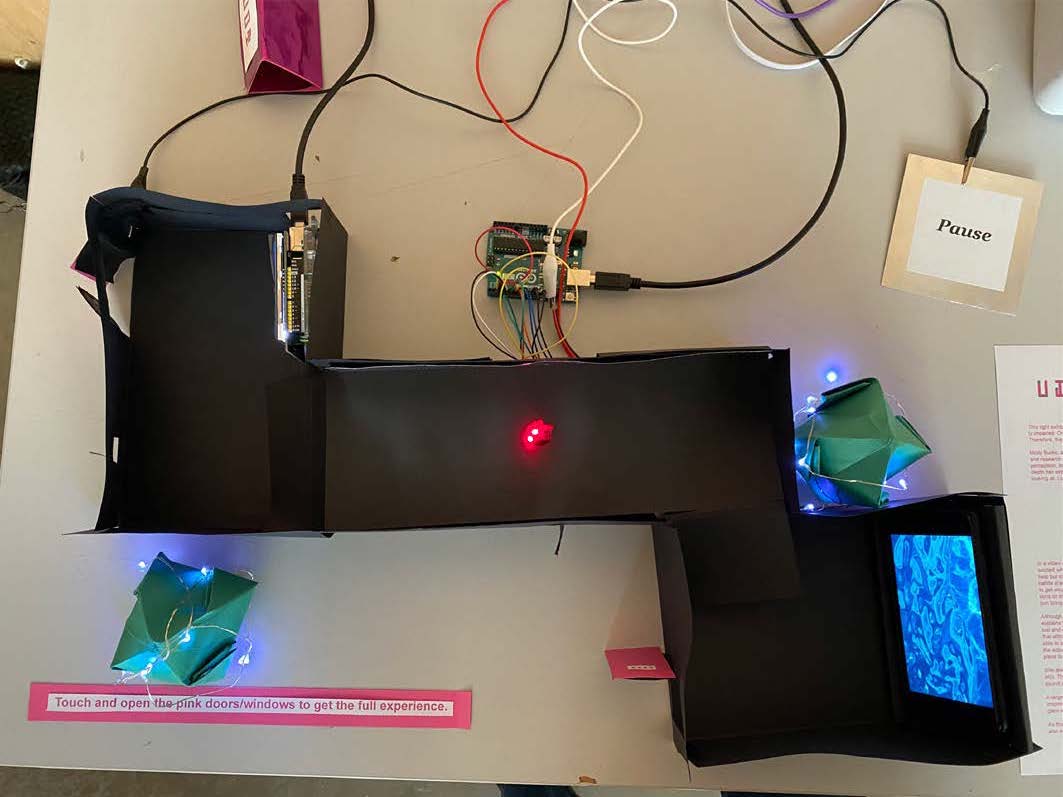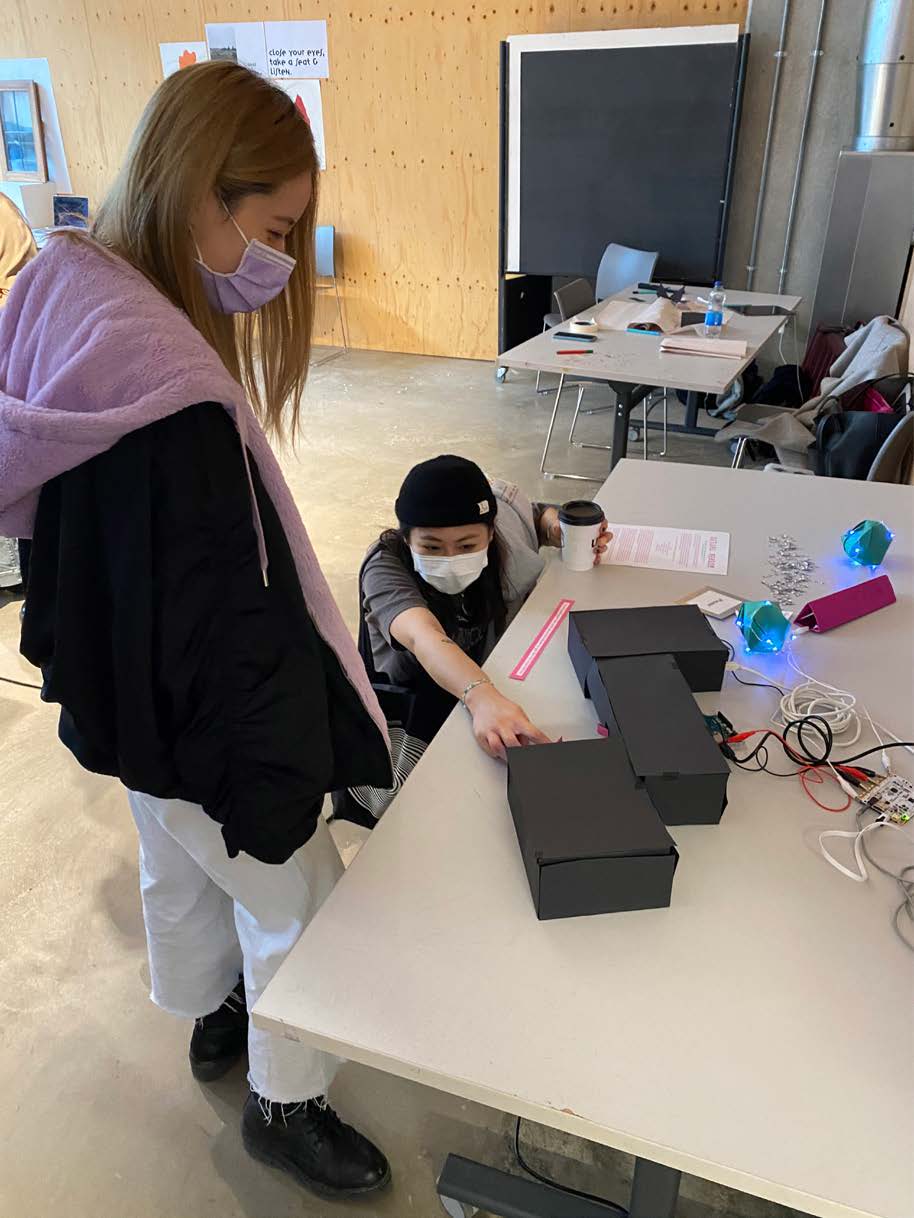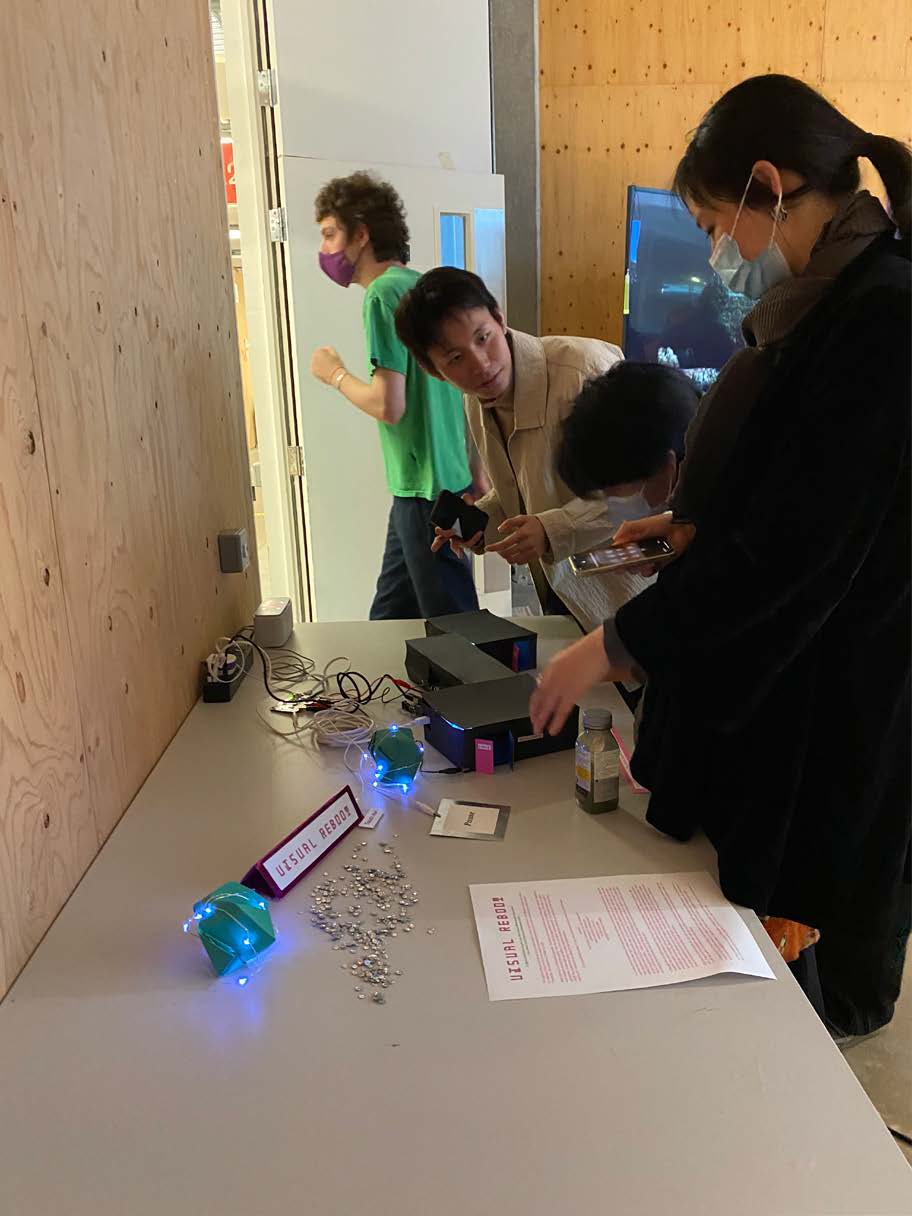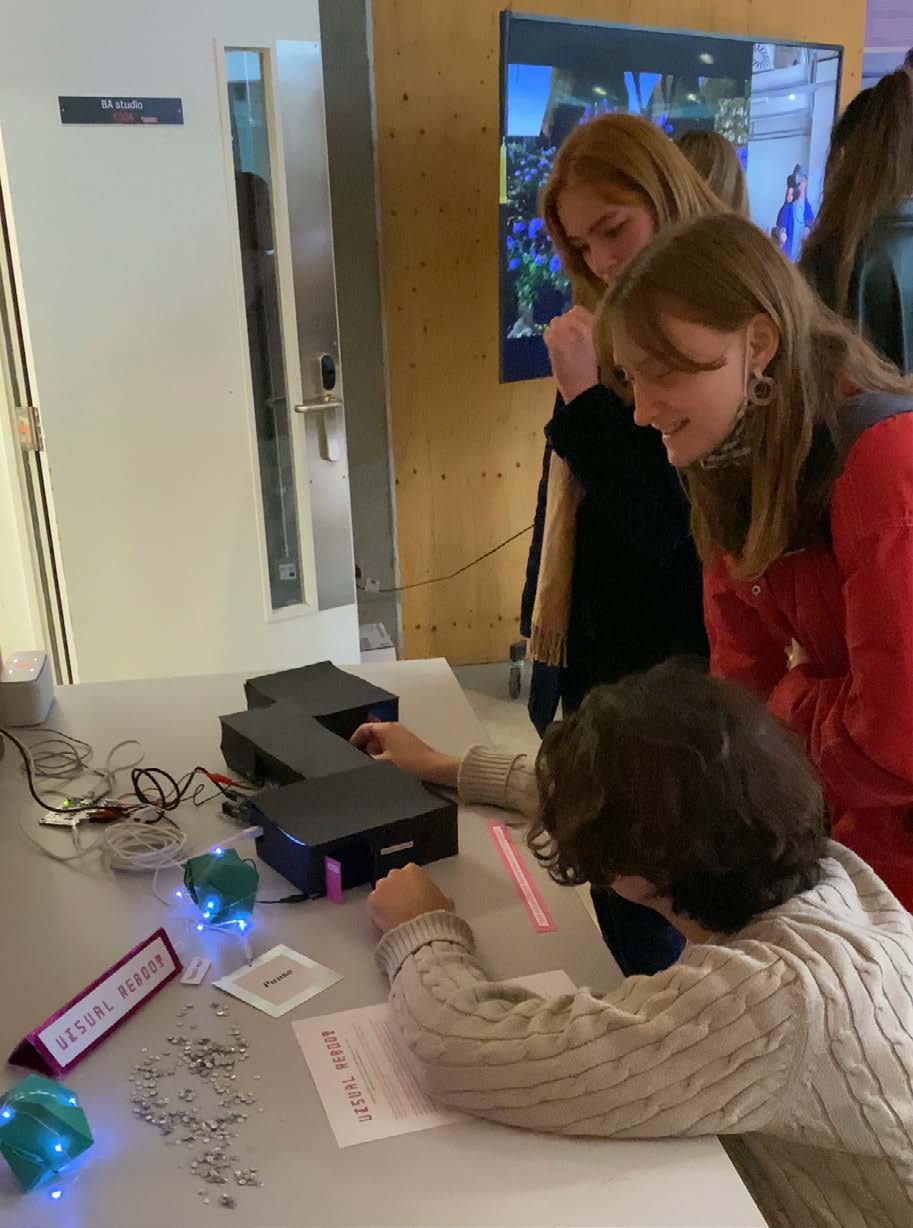Visual Reboot
October 2021
Paper mockup of light exhibition;
Arduino TFT screen, LED lights BareConductive, iPhone.

This project is a speculative light exhibition in a public park for Molly Burke, a motivational speaker, Youtuber, and accessibility design consultant who is legally blind. The exhibition consists of experiences that have been carefully designed to cater towards her limited vision due to retinitis pigmentosa and nystagmus. These diseases have caused her to have no depth perception, limited light perception, and constantly sees fireworks. The final outcome is a small scale interactive model that uses prototyping hardware accompanied by basic architectural concept drawings in order to pitch the idea to an organization that could bring to life the full scale model.
In a video titled What are Blindisms?, she explains that she gets excited when she sees light as her brain constantly craves visual stimulation. When she is tired or stressed, her brain craves it so much that she can’t help but stare at her glitter phone case or a candle in the middle of the table. She even has certain habits she would only do in the comfort of her home, to avoid drawing attention to herself, in order to get visual stimulation. These habits include holding up a water bottle to a light to look at the reflections or shining a light at a mirror. My intention with this project is to design a safe space outside of her home for Burke to receive visual stimulation based on her blindism habits. In addition, it serves to bring these habits into the public to educate them.
The exhibition breaks assumptions that people with a disability in a certain sense do not find pleasure in activities associated with that sense. My main inspiration for this was the chapter about DeafSpace in the book What Can a Body Do?: How We Meet the Built World by Sara Hendren where she explains that music can be “a beautiful bit of sensory input for folks who don’t primarily use their ears to understand one another”. Similarly, I want to create a beautiful bit of visual input for Burke who does not rely much on her eyes. While looking into exhibitions designed for the blind, I could not find previous examples designed for them from start to finish. There are examples of exhibitions that accommodate the blind through audio descriptions or tactile experiences, but “while only 18 percent of people with significant visual impairments are actually totally blind, most can at least perceive light.” (What Do People Who Are Blind See? - The Chicago Lighthouse, 2016) I wondered why there aren’t visual experiences created solely for them. Afterall, they may not need their vision for day to day practical reasons but research on blindisms show that their brains still crave visual stimulation.
I chose the beautiful typeface, Braille Neue that naturally includes braille in the design instead of repeating all the text in braille for the sake of being accessible. The experiences directly mimic ones that Burke speaks about in her videos including candlelight and clear water bottle reflections. By using a combination of Arduino screens, LED lights, and an iPhone, I was about to create small scale light exhibition pieces. I added an element of interactivity and sound by using a BareConductive touch board causing touching the doors and windows to activate the audio that would be in each room.
︎︎︎ Timelapse setting up the paper structure (breaks down to fit an A4 folder.
︎︎︎ Process and interation building the structure.


︎︎︎ User interaction.





View Next Project
︎︎︎ ︎︎︎ ︎︎︎
︎︎︎ ︎︎︎ ︎︎︎